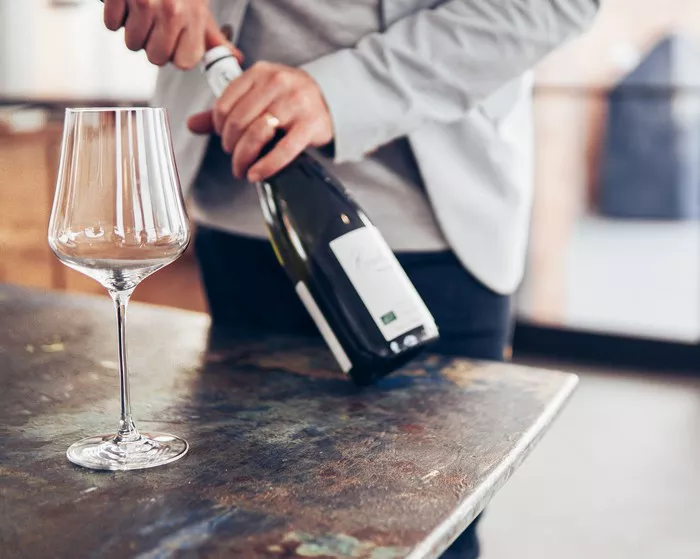Cherry wine, with its alluring combination of sweet and tart flavors, is a delightful libation that has been enjoyed for centuries. Crafting cherry wine is a labor of love that involves capturing the essence of fresh cherries and transforming them into a vibrant and exquisite beverage. In this comprehensive guide, we will take you on a journey through the art of cherry wine production, from selecting the perfect cherries to the fermentation process, aging, and even enjoying the final product. Whether you are an experienced winemaker or a curious beginner, this guide will unravel the secrets of cherry wine and provide insights into the fascinating world of fruit winemaking.
1. Cherries – The Heart of Cherry Wine
The first and foremost component of cherry wine is, of course, cherries. Selecting the right cherries is essential to creating a flavorful and balanced wine. Two primary types of cherries are commonly used for winemaking:
Sweet Cherries: Varieties like Bing, Rainier, and Lambert are celebrated for their natural sweetness and are often chosen for cherry wine to impart a rich, fruity character.
Tart Cherries: Montmorency and Morello cherries are renowned for their tartness, which adds a delightful tang and complexity to cherry wine.
The choice between sweet and tart cherries will influence the final flavor of your wine, and some winemakers even opt for a blend of both for a harmonious balance.
2. Cherry Wine Varieties
Cherry wine comes in various styles and forms, offering a wide range of flavor profiles to cater to diverse preferences. Some popular cherry wine varieties include:
Sweet Cherry Wine: Made primarily from sweet cherries, these wines are often sweeter and showcase the natural fruitiness of cherries.
Dry Cherry Wine: Dry cherry wines have little residual sugar, allowing the tartness of the cherries to shine. They are known for their crisp and refreshing character.
Blended Cherry Wine: Winemakers often blend sweet and tart cherries to create a balanced and complex wine, combining the best of both worlds.
Cherry Dessert Wine: These wines are sweeter and often fortified with brandy or another spirit to achieve higher alcohol content.
3. Harvesting Cherries
The timing of cherry harvesting is critical to ensure the cherries are at their peak ripeness. Cherries should be harvested when they are plump, fully colored, and have reached their maximum sugar content. A simple way to test their readiness is to taste a few cherries to ensure they have the desired level of sweetness and tartness. Harvesting is typically done by hand to ensure the cherries are carefully picked without damaging the fruit.
4. Preparing Cherries for Winemaking
Once the cherries are harvested, they need to be prepared for the winemaking process. This includes:
Washing: Cherries should be thoroughly washed to remove any dirt, debris, or pesticides.
Stemming and Pitting: Depending on your preference and equipment, you can choose to either stem and pit the cherries or use them whole. Pitting the cherries can be a time-consuming process but can result in a smoother wine.
Crushing: Crushed cherries release their juices, which is essential for the fermentation process. This can be done using a fruit press, a potato masher, or even by hand.
5. Cherry Wine Fermentation
Fermentation is the heart of winemaking, where sugars in the cherries are transformed into alcohol by yeast. Key steps in the fermentation process include:
Yeast Selection: Choosing the right yeast strain is crucial for the desired flavor and aroma in cherry wine. For cherry wine, many winemakers opt for red wine yeast strains.
Fermentation Vessel: A primary fermentation vessel, often made of food-grade plastic or glass, is used to contain the crushed cherries and yeast. It should be equipped with an airlock to allow gas to escape while preventing contaminants from entering.
Temperature Control: Maintaining the right fermentation temperature, typically around 70-75°F (21-24°C), is essential for yeast activity. Cooler temperatures can preserve more delicate fruit flavors.
Punching Down: During fermentation, the cap of skins and pulp that forms on top should be gently pushed down into the liquid to ensure even extraction of color and flavor.
Fermentation Duration: The fermentation process usually takes one to two weeks, but this can vary depending on the desired style of cherry wine and the yeast used.
6. Pressing and Racking
Once fermentation is complete, the wine is pressed to separate it from the solids, and then it is transferred into a clean vessel for aging. The process of pressing and racking helps clarify the wine and remove sediment. This is done with care to prevent oxidation, which can negatively impact the wine.
7. Aging Cherry Wine
Aging is a crucial step in the winemaking process, as it allows the wine to mature, develop complex flavors, and achieve balance. Cherry wine is often aged in oak barrels, which can impart additional layers of flavor, such as vanilla and spice. The duration of aging can vary, with some cherry wines being enjoyed relatively young, while others benefit from several years of maturation.
8. Bottling and Corking
When the cherry wine has reached its desired state, it is time for bottling. Winemakers use sterile bottles and corks to ensure the wine remains free from contaminants. It’s essential to label and seal the bottles properly to protect the wine during storage.
Conclusion
Crafting cherry wine is a delightful and rewarding process that allows you to capture the essence of cherries in a bottle. The art of cherry wine production combines tradition, science, and a touch of creativity to yield a beverage that reflects the unique character of the cherries and the winemaker’s expertise.


